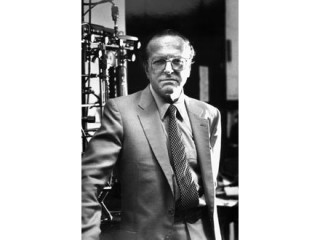
Thomas Gold biography
Date of birth : 1920-05-22
Date of death : 2004-06-22
Birthplace : Vienna, Austria
Nationality : Austrian
Category : Science and Technology
Last modified : 2011-09-28
Credited as : astrophysicist, U.S. National Academy of Sciences,
0 votes so far
Gold was the son of a Jewish businessman in Vienna, Austria. His family moved to Berlin when he was an adolescent, and later fled to England from the Nazis. His father's gift of a watch, which Gold took apart and reassembled, led to his interest in technology. He earned a master's degree in mechanical sciences from Cambridge University with a thesis that proposed that the ear acts as an oscillator of sound. Years later it was discovered that minute hair cells working with vibrating membranes do indeed serve this function in the ear. After he was briefly interned at the start of World War II due to his Austrian origin, his degree got him a job on a top secret British radar project. During his internment, he struck up a friendship with fellow prisoner Herman Bondi, with whom he would later cowrite his "steady-state" paper. He taught at Trinity College, Cambridge, from 1947 to 1951, was an assistant at the Royal Greenwich Observatory from 1952 to 1956, and then was hired by Harvard University in 1957 to teach astronomy. In 1959, he accepted a directorship in Radiophysics and Space Research at Cornell University in Ithaca, New York. There he pushed for American supremacy in the space race, and as chairman of the astronomy faculty he hired the astronomer Carl Sagan, later a famous author on cosmology and host of the popular television documentary series Cosmos.
Gold's "steady-state" theory on the universal continual creation of matter-which argued that the universe is infinite and its matter constantly replenished-was presented at the Royal Astronomical Society in Edinburgh in 1948 to generally skeptical peers, but it provoked fervent discussion and research into measuring microwave radiation that resulted in strengthening the Big Bang theory. In the face of mounting evidence of a violent and instantaneous creation of the universe, even Gold began to view his alternative theory as doubtful. But in 1968, his research into the slowing down of a pulsing star in the Crab Nebula gave rise to his well-received theory of spinning neutron stars. While under contract at NASA in the 1960s, he proposed that the moon had been pockmarked by meteor bombardments that accounted for its powdery surface. Fearful that a manned spacecraft might sink deep into the surface of the moon upon landing, the agency sent the unmanned Surveyor on a pre-Apollo troubleshooting mission. Though the powder's depth was found to pose no danger to spacecraft or astronauts, Gold was proved correct about its existence.
His next daring theory emerged as a result of the energy crisis of the 1970s. With an ambitious drilling project in Sweden, he sought to prove that hydrocarbons are not of biological origin and therefore could exist in huge supply in deeper subterranean depths. Gold proposed that these substances-oil, gas, and especially methane-flow from gigantic reserves toward the earth' surface, where our limited drilling capabilities are able to exploit them. The deeper we can drill, he argued, the more we will find. Though his discovery of an oily evidence was ridiculed by critics, two decades later he published The Deep Hot Biosphere, a book that rehashed his theory. According to the Washington Post, Gold said, "Most men can seldom accept even the simplest and most obvious truth if it obliges them to admit the falsity of conclusions which they have delighted in explaining to colleagues, which they have proudly taught to others, and which they have woven thread by thread into the fabric of their lives."
Gold died of heart disease on June 22, 2004, in Ithaca, New York, at the age of 84. He was divorced from Merle Tuberg Gold, whom he married in 1947, and is survived by three daughters from that marriage. He is also survived by his second wife, Carvel Beyer Gold, whom he married in 1972, their daughter, and six grandchildren.
















